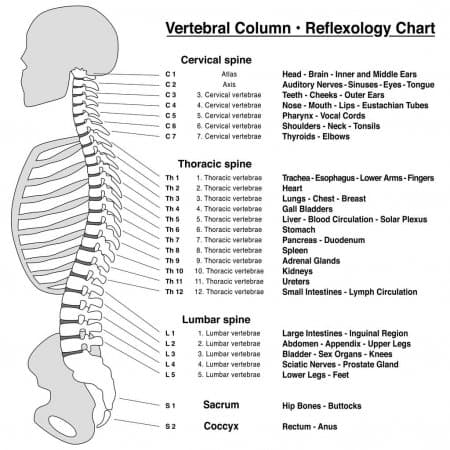Spine Reflexology- Treating Through Back
Spine Reflexology is extremely precise, and because it treats the entire spine by stimulating the nerve roots that emerge from between each pair of vertebrae, it can alleviate almost any ailment, including headaches, muscle tension, hormone imbalances, anxiety, respiratory issues, digestion, and circulation, to name a few examples.
Reflexology on the feet may not confuse with this! This relatively new therapy works using a moderate massage-like motion by relaxing the muscles around the spine, neck, and pelvis, creating the sensation of receiving a soft massage. You continue to be completely dressed. A very soothing treatment is viral at the Centre. It may give regularly.
How to Relieve Back Pain through Spine Reflexology
Spine Reflexology is very effective for back Pain. Eight out of ten individuals will have back discomfort at some time in their lives. Most back pain is non-specific; you may not link its meaning to a specific event, such as an accident. This form of back pain is often erratic in its occurrence. You may utilize reflexology methods to provide yourself with both short-term and long-term comfort, regardless of whether your back pain is sporadic or persistent.
Treat the right area
Using your feet as a pressure point may help you reduce lower back discomfort. The reflexes on the soles of your feet, the whole region surrounding your heel, and the area around your ankle are all quite sensitive, so applying pressure to these spots can be very beneficial. You’re using reflexology to the reflex points on your shoulders and upper back to relieve tension.
Direct your attention to your cervical spine
You may use the right thumb to activate any and all of the spine reflexes that you may be able to place along the inner border of your foot, starting at the tip and going all the way down to your ankle, while supporting your right foot with your left hand. In order to press every reflex zone on your foot, you must push your thumb firmly into the skin of your toe and gently proceed down the whole length of your foot.
Make use of your sciatic nerve
They may be discovered immediately behind your anklebone and extend up in a straight line for around 4″ or 10 centimeters, depending on your height. You may characterize Sciatica by severe pain that radiates down the leg because of nerve compression, which you may cause by various circumstances.
Make contact with the reflex points located on your spine.
To achieve this, apply pressure with your thumb along the outer edge of your palm, as seen below. To begin, focus your attention on your right hand, then move to your left hand.
Engage your shoulder and upper back reflexes
You may do this by exerting pressure on the region on the top of your hand right under your pinky and ring fingers. The location for your shoulders and upper back is positioned on the palm of your hand, right behind your pointer and middle fingers, just under your middle finger.
On the outside of your hand, just below the base of your thumb, there is a reflex point for the upper back located on your hand’s palm. Always use both hands to train the reflex spots; your left shoulder reflexes are situated at the bottom of your right pinky, respectively.
Stimulates the nervous system
In many ways, the practice of spine reflexology is beneficial to our central nervous system. The brain is better capable of dealing with stimuli more efficiently, speeding up cognitive strengths; as a result, the speed of physical responses increases, which improves your recall. In general, the whole brain can operate more efficiently and decisively.
You may alleviate Migraines and headaches.
Individuals experiencing pain often seek out Spine Reflexology services since reflexology may lower the intensity of migraines and headaches by boosting blood flow and alleviating muscular tension. Given that, stress and psychological variables often express themselves as migraine symptoms, it is possible to eradicate stress-induced headaches as well.

